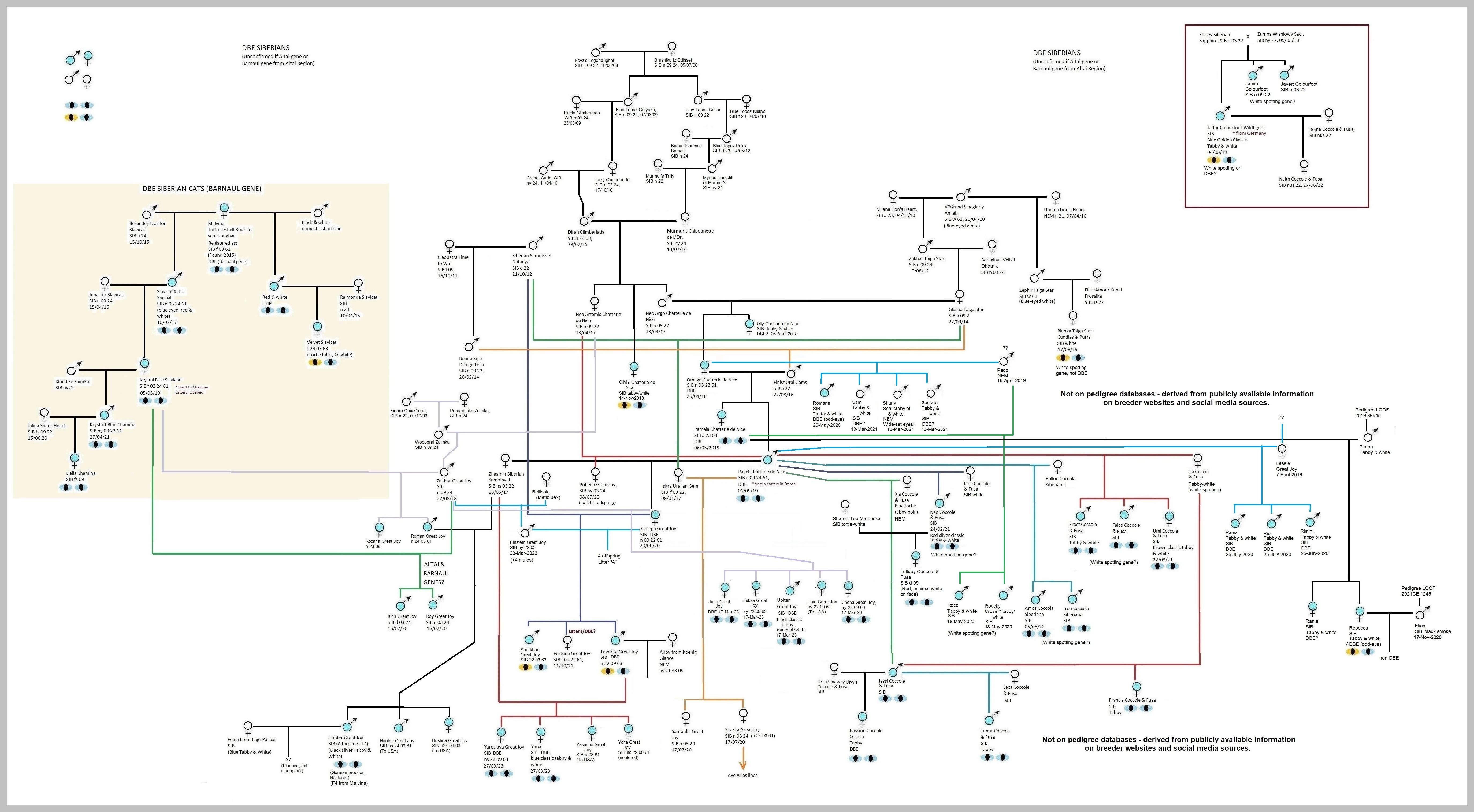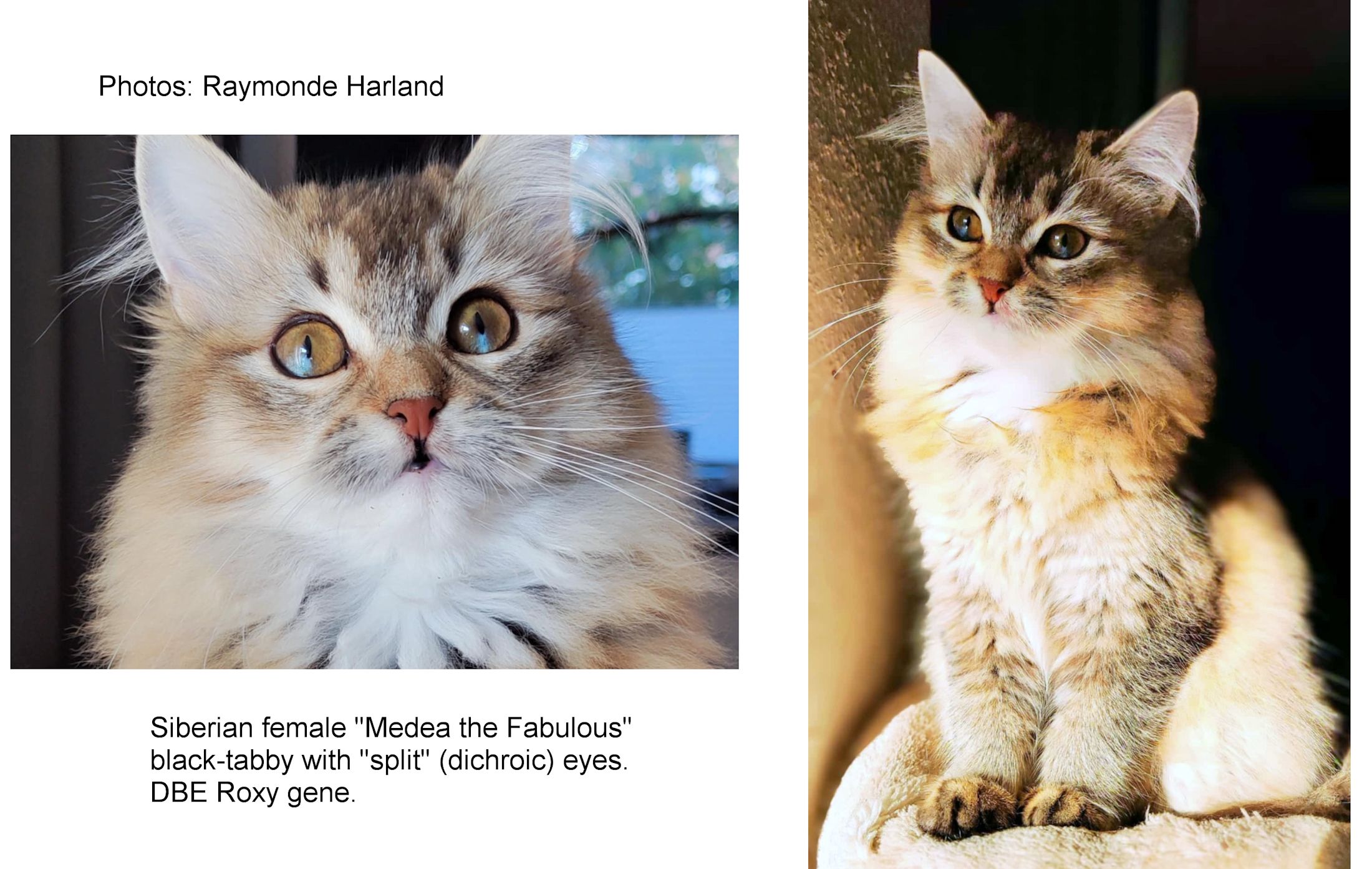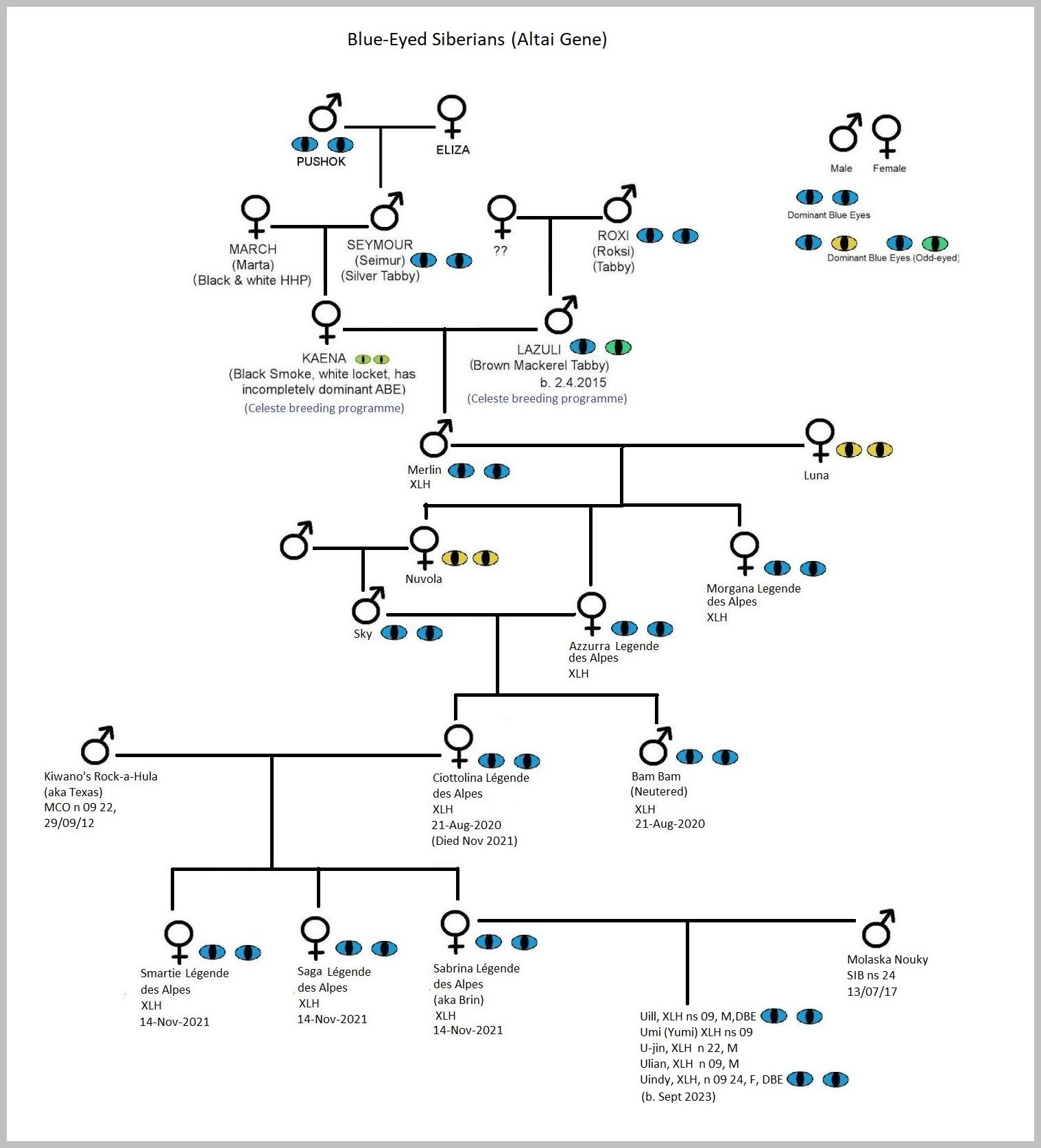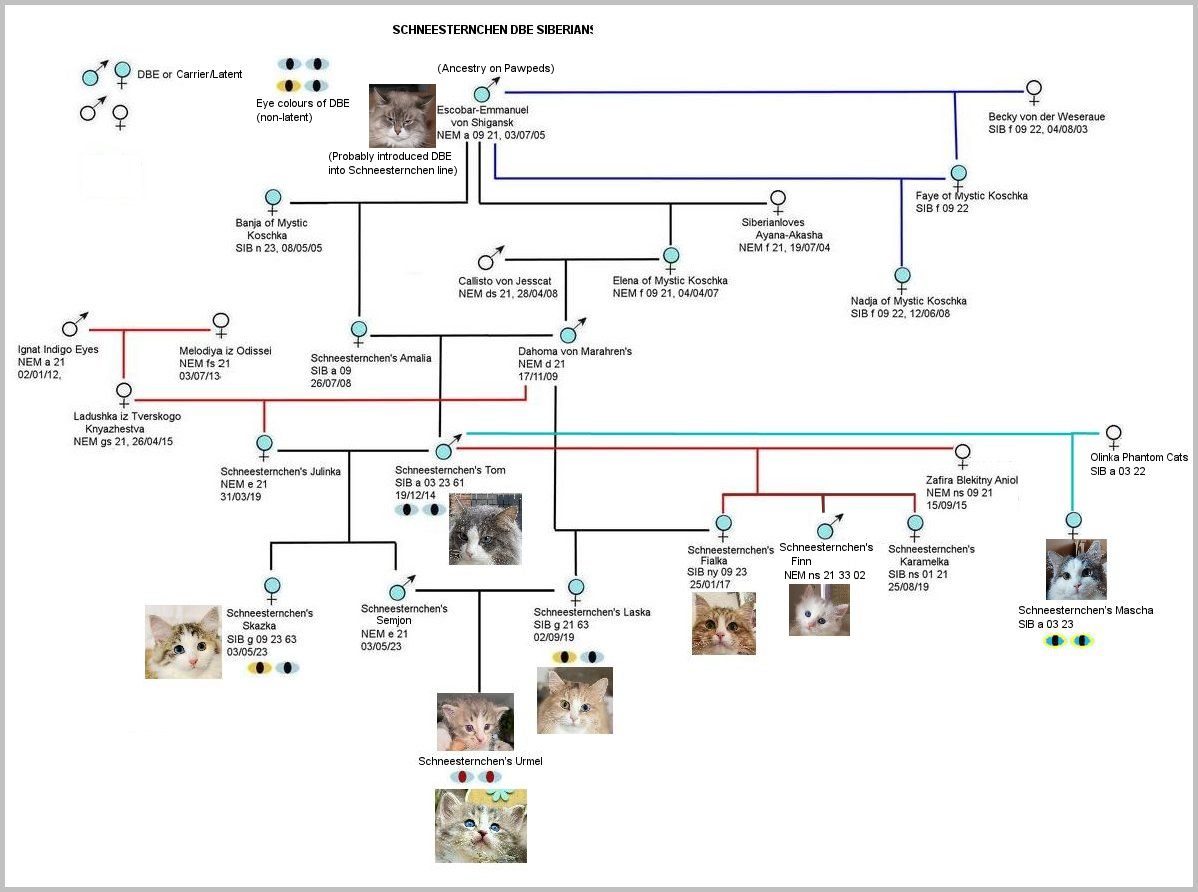
BLUE-EYED BREEDS - BLUE-EYED SIBERIAN (Barnaul Gene & Roxi DBECEL Gene)
DBE SIBERIAN (BARNAUL MUTATION - MALVINA GENE)
Test matings of a blue-eyed semi-long-haired tortoiseshell cat found on the street in Barnaul (Altai Territory) proved to be different to the "Altai breed" cats (which are DBECEL) found in the 1990s. In 2015, Elena Nekrasova (Slavicat cattery) acquired this blue-eyed tortoiseshell, Malvina, which was already pregnant and produced kittens, two of which were blue-eyed. After undergoing examination and certification, Malvina became the ancestor of a line of Siberian cats with a dominant gene for blue eyes. Blue-eyed cats from this line have never been bred with each other, so nothing is known about Barnaul DBE homozygotes. The Barnaul cats were investigated by Rano Makarenko.
Initially this gene was confined to the Siberian breed, but in 2017, Malvina's granddaughter, an odd-eyed cat called Velvet Slavicat, was used in other DBE breeding programmes.
One of Malvina's kittens blue-eyed kittens, from the mating with the black and white male, was bred to a green-eyed black tabby Siberian female called Raimonda Slavicat. The resulting litter was a mix of dominant blue eyes, DBE odd-eyes and green eyed offspring. A red-and-white DBE male was bred to a green-eyed littermate and this gave rise to a line of Barnaul DBE Siberian cats.

DBE SIBERIAN (Roxi DBECEL GENE)
Although the gene involved is the Roxi DBECEL gene, it appears to come from Siberian foundation cats.
A line of DBE Siberians are bred by Tatiana Pchelnikova (Great Joy cattery, Yekaterinburg, Russia). According to Pawpeds and Top-Cat databases, all ancestors are registered as Siberian and Neva Masquerade (colourpointed Siberian). Many of the ancestors are "with white" so blue eyes may have been present in foundation cats selected in the 1980s and 1990s.

In Germany, Siberian breeders working with the DBECEL DBE gene are Anja Gutscheck (Eremitage Place [Hermitage Palace]) who will be joined with Raymonde Harland ("the Fabulous" cattery) and Liebeshof cattery. In Italy, Coccole & Fusa Cattery breed DBE Siberians.
The Great Joy lines trace to Omega Chatterie de Nice via her son, Pavel Chatterie de Nice, imported from France. The Coccola & Fusa and Coccola Siberiana lines also trace to Pavel Chatterie de Nice and to a second DBE male, Jaffar Colourfoot Wildtigers, from Germany. Pavel has produced a large number of offspring with numerous females.

DBE SIBERIAN (SCHNEESTERNCHEN LINE)
Another DBE line (unknown gene) is Nicole Mayer's Schneesternchen (means "Snow Starlets") Siberian and Neva Masquerades, but its origin isn't known. Because many of the cats in the ancestry are either colourpoint or have white markings, the trait could have been hiding in plain sight for some time or dismissed as blue eyes due to colourpoint and/or bicolour. Most of her cats are bicolour or have a lot of white, which is why the blue eyes was overlooked at first. Tom, Skazka, Semjon, Urmel and Mascha and many "latents" (genetically DBE, but not having blue eyes) all have white tips at the end of the tails, which is unusual for ordinary bicolours, but not unusual for DBE cats. Laska (odd eyes) does not have the white tail tip. The eyes are an unusually intense blue with red eye-shine noted in blue-eyed non-colourpoint cats with minimal white markings. Nicole has noticed several other Siberian cats, not related to her own, with unusually intense blue eyes or odd eyes and minimal white. The cats tested negative for the 3 known DBE variants (Sept 2024) and Professor Marie Abitbol believed these were more likely due to the white spotting gene, although white spotting is minimal in some of the cats.

MULTIPLE DBE GENES IN THE SIBERIAN BREED
There are currently two different lines of DBE Siberians with potentially different DBE genes. The Slavicat line represented by the Chamina Siberians in Quebec, Canada have the Barnaul gene from a cat called Malvina. The DBE Siberians bred in Germany, Italy and France appear to have the Altai gene. The Great Joy line appear to be Altai DBE gene cats. I wasn't able to trace an Altai DBE outcross ancestors so I don't know if the "Altai gene" refers to the Altai breed or to Barnaul cats from the Altai region.
As long as the lines are not bred together there should not be issues, but it is probable that, generations down the line, newer breeders will unknowingly combine the DBE genes. As with the early Topaz mixed-DBE gene cats, this could lead to issues. This has already happened as the family tree shows, however I have yet to confirm where the "Altai gene" came from.